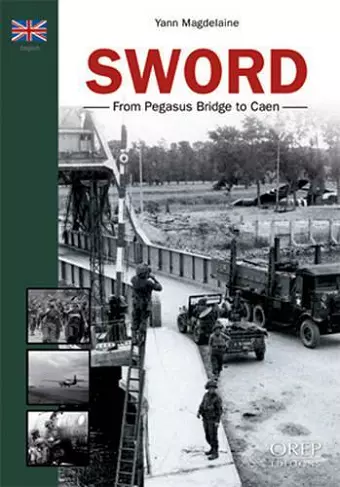Sword
From Pegasus Bridge to Caen
Format:Paperback
Publisher:OREP
Published:15th Feb '13
Currently unavailable, our supplier has not provided us a restock date

Sword, commonly known as Sword Beach, was the code name given to one of the five main landing areas along the Normandy coast during the initial assault phase, Operation Neptune, of Operation Overlord; the Allied invasion of German-occupied France that commenced on 6 June 1944. Stretching 8 km from Ouistreham to Saint-Aubin-sur-Mer, the beach was the eastern most landing site of the invasion. Sword was divided into several sectors, and each sector divided into beaches; thus the British 3rd Infantry Division, assigned to land on Sword, assaulted a two mile (3 km) stretch of Sword codenamed Queen Sector - Queen Red, White and Green beaches. Sword is around 15 km from Caen, the ultimate goal of the 3rd Infantry Division. The initial landings were achieved with low casualties but the advance from the beach was met with traffic congestion, heavily defended areas behind the beachhead and was met by the only armoured counterattack of the day, mounted by the 21st Panzer Division, that halted further progress towards Caen. At 00:16, on June, 1944, 1944, Major John Howard landed with his company just a few yards from Bénouville bridge. In the early hours of D-Day, his British paratroopers were the first Allies to set foot on French soil. They were the vanguard of the 6th Airborne Division whose mission was to secure the east flank of the landing zone, a few hours before the amphibious operation. At dawn, the British 3rd Division, backed by commando units, including Commandant Kieffer's 177 French troops, landed on Sword Beach. At 13:00 hours, Lord Lovat's men joined forces with the paratroopers at Bénouville, forging a vital link between the liberators from the skies and those from the seas.
ISBN: 9782815101066
Dimensions: unknown
Weight: unknown
36 pages